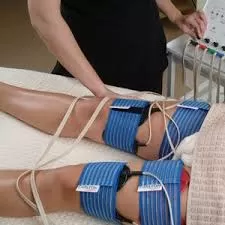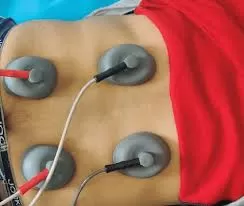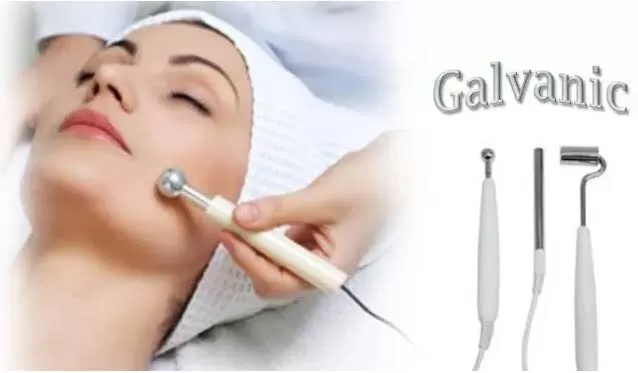Faradic stimulation for (Bell’s palsy, hemiplegia,cerebral palsy)
Faradic stimulation uses alternating current to contract muscles, aiding muscle strengthening and rehabilitation in physiotherapy, particularly for muscle re-education.

About This Treatment
Faradic current treatment in physiotherapy involves the use of alternating current (AC) to stimulate nerves and muscles. This method utilizes electrodes placed strategically on the skin to deliver controlled electrical pulses, which cause rhythmic muscle contractions. Faradic stimulation is beneficial for muscle strengthening, particularly in cases of muscle weakness due to injury, surgery, or neurological conditions. It aids in muscle re-education by improving muscle tone, increasing circulation, and promoting neuromuscular coordination. Physiotherapists use faradic current treatment as part of rehabilitation programs to restore functional movement patterns and enhance overall muscle function. Treatment sessions are tailored to the patient's needs and progress, ensuring safe and effective outcomes under professional guidance.
Key Benefits
Effective Results
Clinically proven to deliver measurable improvements
Minimal Downtime
Quick recovery with most patients resuming normal activities quickly
Advanced Technology
Utilizing the latest medical advancements
Personalized Care
Tailored to your specific needs and health goals
Ready to begin your treatment?
Schedule your consultation today
Related Treatments

Interferential therapy(IFT) for pain reduction
Interferential therapy uses electrical currents to relieve pain and promote healing. Its effective for musculoskeletal issues like back pain and sports injuries.

Muscle stimulation by (Galvanic current) for muscles
Muscle stimulation uses electrical currents to contract muscles, aiding rehabilitation after injury or surgery and improving muscle strength and function.

Ultrasound for deep muscle pain
Ultrasound therapy uses sound waves to treat muscle and joint pain by increasing blood flow and promoting tissue repair. It's commonly used in physiotherapy.
